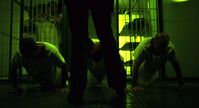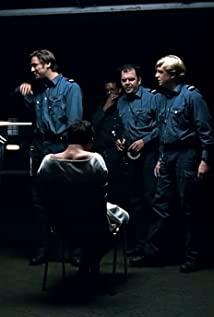2. The phenomenon of conformity, in which both normative and informative influences are reflected.
The former: refers to the hope of being accepted by others and conforming. For example, some prison guards sympathize with prisoners, but in order to be accepted by other prison guards, they have to follow other guards to take violent actions against prisoners.
The latter: Refers to following the crowd in order to understand the correct way to respond in a given situation. For example, when some prison guards were overwhelmed by not being able to contact the professor in charge of the experiment, they listened to the leader of the experiment—this was to test their ability to handle crisis situations and follow him to act accordingly.
3. Fundamental attribution error and self-interest bias, the former refers to the tendency to attribute the behavior of others, especially negative behavior, to personal characteristics
rather than environmental factors, and the latter refers to the tendency to attribute one's own negative behavior to situational factors. tendency.
The former: When Prisoner 77 helped another prisoner drink milk, and then did some rebellious behavior, the prison guards attributed his behavior to his personal attribute, that is, "destroying the completion of the experiment."
The latter: When the guards were asked why they committed the violence themselves, they attributed it to disrespect by the "prisoners" and external situational factors such as the requirements of the rules.
4. Attitudes and behaviors: Attitudes are sometimes affected by behaviors, such as: cognitive dissonance theory. When behaviors conflict with corresponding attitudes, people tend to change their original attitudes to make them consistent with their behaviors.
Example: A prison guard in the film starts out being nice to the inmates and plays basketball with them, but after a few punitive behaviors on the inmates, his attitude towards the inmates changes, thinking "they must be made to obey" establish your own authority."
5. The influence of situational factors on aggressive behavior. Among them, setbacks-aggression theory, setbacks often inspire people's aggressive behavior. For example, the prison guard in the movie was locked in a cell by No. 77, and after being frustrated, he carried out a large-scale counterattack and aggressive behavior;
direct anger makes the attacking Expansion: When Prisoner No. 77 directly contradicted the leader of the prison guards and angered him, the prison guards later carried out strong attacks on Prisoner No. 77.
6. Obey authority. Most people will obey authority in special situations. For example, the prisoners in the film showed obedience to the guards later in the film. At the same time, the guards also showed obedience to the professors of the male chief rather than to the female assistants. (Authority affects people's obedience)
7. Observational learning. People will pass through to observe whether the behavior of others is rewarded and punished to achieve the effect of learning, without such reward or punishment actually happening to themselves.
For example, one of the inmate subjects stated that after seeing a disobedient inmate being punished, he also decided to obey the guards in order to
prevent himself from the same punishment.
View more about The Experiment reviews











